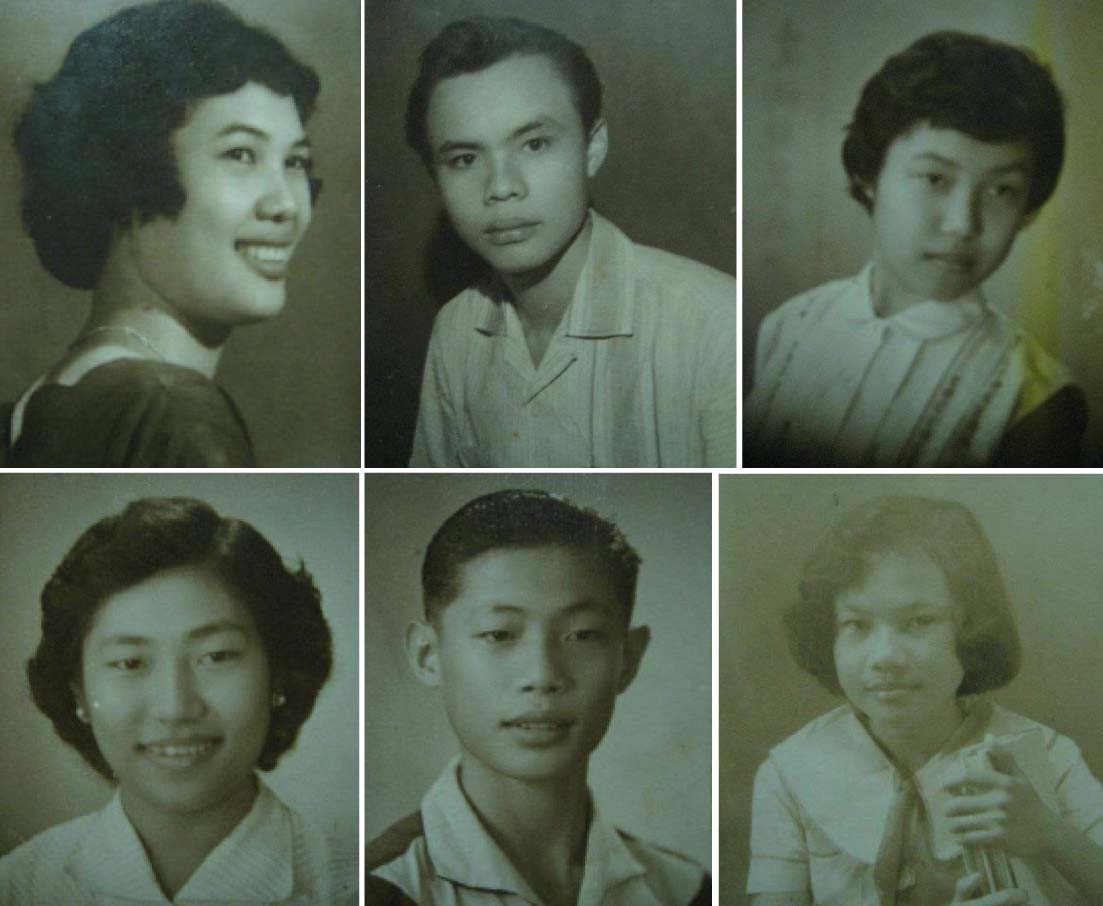This epic quest involves several families and spans locations from China’s Fujian province, to Hong Kong, and to the Philippine islands of Luzon, Visayas and Mindanao. Despite extreme obstacles, each find is a result of unexpected but fortuitous happenings.
Precedence
My late father-in-law, Engr. Antonio B. Ty (鄭道党), is my role model in my relative-finder quests. After decades of attempts, he was finally able to meet up with his half-brother in mainland China in 1998. While still in Qingmeng village, Jinjiang City, Fujian province (泉州晉江市池店鎮清蒙村), a fellow villager of the same surname asked his help to find his relatives in the Philippines. He immediately called up his relatives in Borongan, Samar.
But the family in question had moved, and he was directed to other relatives who had migrated to Surigao who might know where the family went. The quest eventually led to Casiguran, in Sorsogon, a town that is right on the national highway between Manila and Samar.

Upon arriving back in the Philippines, he took a long drive to Samar instead of taking an airplane and made a temporary stop by the town. He located the Philippine relatives that same day. The family became emotional and cried upon hearing news from their lost kin in China.
After this little adventure, my father-in-law wanted to go back to Qingmeng village and visit each home to search for old letters and photos sent from the Philippines. His intent was perhaps to document the migrants’ stories of the village, as well as reunite more families.
Sadly, much of his ancestral village has now been demolished by the Chinese government. How I wish he is alive now to see all these families I have helped reunite. We could have worked hand-in-hand on some of my adventures.
Junk mail
On the evening of Oct. 13, 2013, an accidental click in Facebook messenger brought me to my junk messages. Back then, FB junked spam mail and other suspicious messages generated by sources like computer viruses and potential hackers. It also considered as junk mail any message from Facebook users who are not yet linked as a FB friend.
I was initially confused by the list of messages. Although I am an active FB user, the most recent message there was actually written seven months back in April 10. It was from a certain Ed Lim whom I am not acquainted with.
His message read: Hi Ed. Is your middle name Chan? If you know any Chan in Samar please let me know. I have here the pictures sent [through] my father about three years ago by a man in China who is looking for his relatives in Samar. His sister’s name is Nenita Chan and their father is Mr. Chan Chuy Kong [of] Pagsanghan, Tarangnan, Samar. They have a store called “Chuy Kong Store” with last known address in Pagsanghan,Tarangnan, Samar.
I don’t know if they’ve already found each other. If they already did, at least they can get these old photos back because it belongs to them. [The photographs] even have short messages at the back.”
Tulay subscribers
Ed’s FB profile showed he is Edward Richard Ty Lim (林以驊) from Tacloban City. I sent an FB friend request which was accepted less than five minutes later. He explained that the pictures were from his maternal cousins from Qingmeng surnamed Ty (鄭), the same ancestral village and from the same clan as my wife.
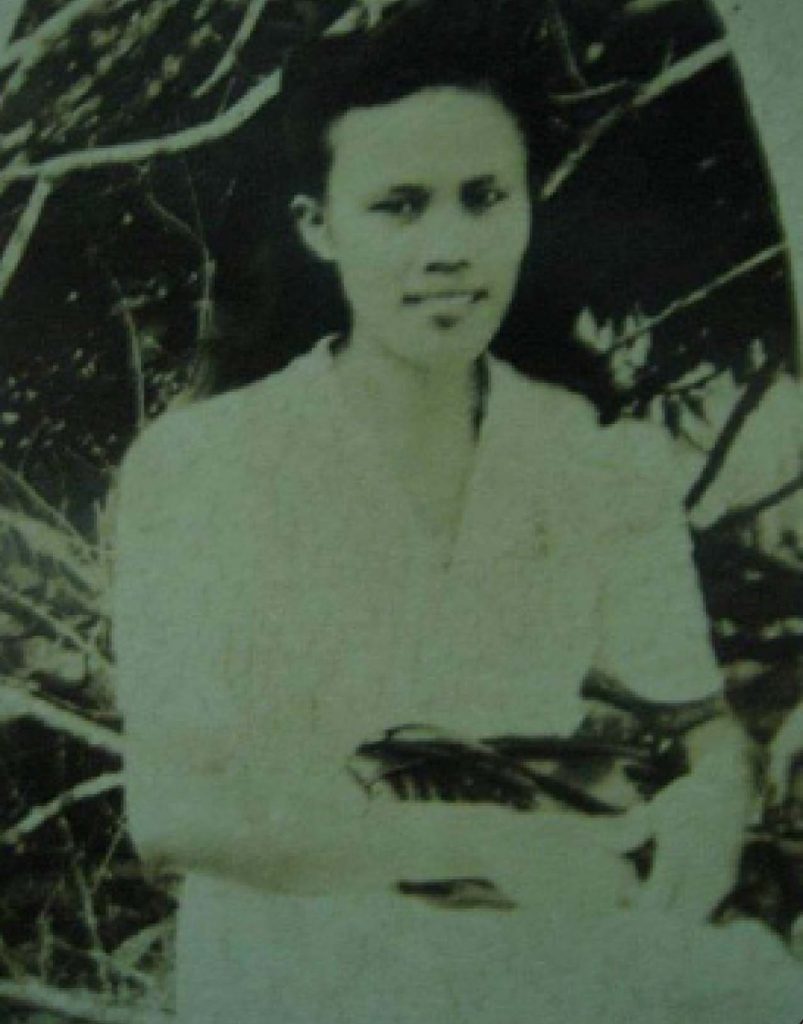
I’ve found a new, albeit a very distant, relative. We talked extensively about my father-in-law’s experience in visiting Qingmeng, stories that my wife Sierra (鄭西拉) lovingly shares with me. He thought of approaching me after his mother, Gloria Ty-Lim (鄭碧瓊), read my 2013 Tulay article about finding relatives in China. She reminded Lim about a bunch of pictures and a letter which was given to his father (Joseph Lim 林大鵬) during one of his trips to China in the 1990s.
In my Tulay article, I had mentioned I am from Samar, and that I am from the surname Chan (曾) and ancestral village in Eni, Chinkang City. After two decades of fruitlessly asking their store’s customers who were from Pagsanghan, Samar for help in identifying the pictures, Ed’s father tried to search for the people in the pictures himself.
But as the Internet and Facebook wasn’t popular yet, he was also unsuccessful; he gave up and forgot about it. The photographs remained in their store’s office drawer, until my Tulay article revived some hope that the pictures can eventually be returned to the owners.
Ed also mentioned that despite the many “Eduardo de la Cruz” in FB, he was able to pinpoint me through my home address.
Album of surprises
Ed showed me in his FB page his Chan family album. I am used to seeing photographs sent from China to the Philippines, but this is my first time to see photos that were sent from the Philippines to China.
The ones the Lim family had consisted of six solo pictures of different children, each with a message on the back. One shows a young lady who apparently is the mother of the children. Though some have Chinese characters, the messages are mostly in English.
I asked Ed for more details about the children in the pictures and how they are related. The searcher, an old man in China, was born in Samar and was sent to China while still a child.
The messages are simple but heart-wrenching. The apparent eldest sister’s message wrote: “This is just to remind you not to forget me – your sister Nenita.”
When the old man gave the old photographs to Ed’s father, he also had a message to his siblings, “Please tell them I never stopped thinking about them.”
I assumed the photos were taken in the 1950s. Some of the children looked young in the photos so I surmised that some, if not most of them, would be in their 70s by now; and some, if not all, could still be alive.
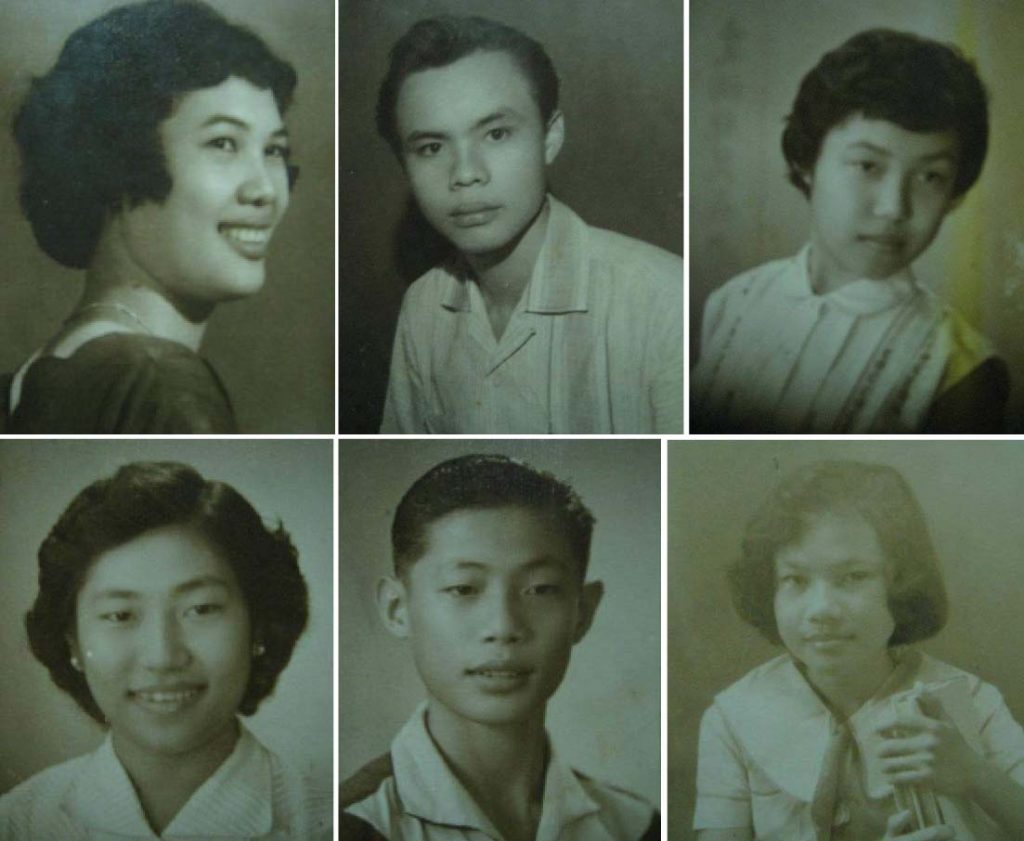
But there was another surprising revelation. Most of the messages were addressed to a Chan Bon Kheng (曾文卿). Among my maternal grandfather’s generation – from his brother to his distant cousins – Bon (文) is their generation name. So, as the parents of the searcher followed the tradition of generation poems, the searcher is my maternal granduncle.
I turned to the copy of the envelope which contained these photos. The address seemed very familiar. I asked Ed where the old man is from.
He said Eni (下輦村 or 御輦村) which the letter indicated as下企, one of the village’s old names. Eni village is in Jinjiang City. So that’s why I recognized some of the characters. It is my grandfather’s ancestral village and I have been there several times already.
According to Chan-Cu family association, and also confirmed by an unknown interviewee in the book The Chinese in Ilocos (1950s-1960s) by American social scientists Hubert and Harriet Reynolds, our village is divided into seven to eight sub-clans called pangtao (房頭).
My cousin in Eni says our pangtao or sub-clan is called Sin Chu (新厝房頭). This is the largest sub-clan in Eni. Fortunately, the searcher, Chan Bon Kheng, mentioned what his pangtao is. He belongs to the same clan as me, so we have more affinity with each other than I originally assumed.
Social network
Ed also showed me a handwritten paper with information about Chan Chuy Kong, owner of Chuy Kong store. My maternal cousins, Roy and Rikki Royandoyan, sometimes go to Tarangnan to visit their father’s hometown, so I asked my Aunt Margarita Chan-Royandoyan (曾雅麗) if she knows the names or the town’s district called Pagsanghan.
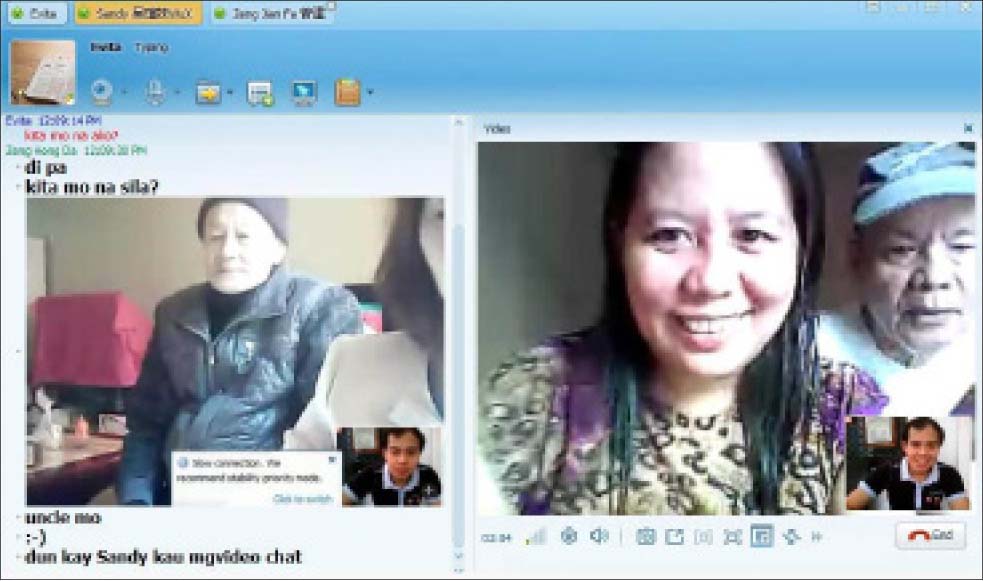
She passed on my query to Uncle Rino Royandoyan since he is more familiar with Tarangnan. Uncle Rino said Pagsanghan was a big barangay in Tarangnan and is now an independent town.
Furthermore, Uncle Rino’s cousin Edgar Peñaranda is from Pagsanghan. Aunt Margarita immediately contacted Edgar’s wife Zenaida, who happens to be a professor and her colleague at the College of Arts and Communication of the University of Eastern Philippines.
After Mano Edgar confirmed he knew Chan Chuy Kong, he told me to add Dondon Portugaliza Chan, Chan Chuy Kong’s grandson, in my FB contacts. Dondon is Mano Edgar’s godson and a public school elementary teacher in Calbayog City.
Dondon was very excited and asked me to “friend” his sister Evita Chan Dominguez as well. Evita resides in Pagsanghan with their father, Eugenio “Enio” Alosos Chan, one of the children in the photographs.
After we connected in FB, Evita showed her father his own old photograph. Ed, Dondon, Evita and I later formed a chat group in FB messenger to swap stories. Evita relayed everything we shared in the group chat to her father and aunts who were eager to hear of news from their lost relatives.
One striking tale Evita shared was that her grandfather Chan Chuy Kong forbade her father and her aunts to write to their brothers in China.
The photographs with messages were done in secret. They asked their Chinese neighbors to write in Chinese along with their English messages and sent their letters to China without their father’s knowledge. They said the lost siblings have not returned since they left, and they lost contact with them for almost half a century.
As long as this narration is, these events all happened in two days through the power of the digital age. It was now time to relay the very good news to the searcher in the mainland. This should be pretty easy right? Wrong!
Finding the searcher
Relaying the news to Chan Bon Kheng proved complicated. Twenty years had since passed and we had to figure out how to get in touch with him.
We first had to hope he is still alive. As well, Ed’s father cannot remember anymore who gave him the pictures. All he remembers is that it was during the Qingmeng (village) trip with Ed’s maternal grandfather.
We then retraced the details of their trip. In July 1991, Ed’s father visited his Lim ancestral village in Iung Te Lim (洋埭林) in Jinjiang. He was accompanied by his father-in-law Antonio Ty (鄭蓬蘭) who wanted to visit his ancestral village at nearby Qingmeng.
While there, Antonio met his nephew, Ty Keng Guan (鄭敬元), and the nephew’s family. Ed related how they decided to contact his mother’s brother in Cebu, Felomino Ty (鄭友文) who had all their relatives’ contact numbers. His father thinks it was either “our cousin’s wife (whose maiden name is Chan) from Eni or our maternal uncle’s wife who is also a Chan but we don’t know what village she is from.”
Ty Keng Guan’s wife is a Chan, named Chan Siu Ti (曾秀治) and is from the neighboring Eni village. Their second son, Ty Chi Ben (鄭志敏) also married a Chan from the same village.
My roots are from Eni and my wife is from Qingmeng. Our respective mainland relatives have intermarriages between the two villages too. The people who hailed from our neighboring ancestral villages certainly do have a strong liking for each other – a strong village romantic relationship.
Joseph Lim eventually remembered the photographs were from the nephew’s wife’s family. Chi Ben’s wife (Chan Bon Kheng’s daughter) gave the photographs to Ed’s dad at the airport shortly before their departure for the Philippines.
Ty Keng Guan had recently migrated to Hong Kong and Ed’s family had difficulty contacting them since the wife, Zeng Xiu Tai, unfortunately passed away a mere month before Ed and I got in touch in FB. The family was busy arranging for sending her ashes back to the mainland.
I also contacted my cousins in Eni to ask about Chan Bon Kheng. But, as the village now has a population of about 5,000 (it could be more as the book Chinese in Ilocos mentioned the population is about 5,000 in the 1950s or 1960s), they were unsuccessful in locating Chan Bon Kheng.
Village gone
I wrote about my wife’s ancestral village’s destruction (“Relative Finder: Memories from a village gone,” Tulay, Sept. 3-16, 2010 issue) which created difficulties in tracing relatives. Ed’s cousin’s family relocated after their village was bulldozed and his family had difficulty finding out where they have moved.
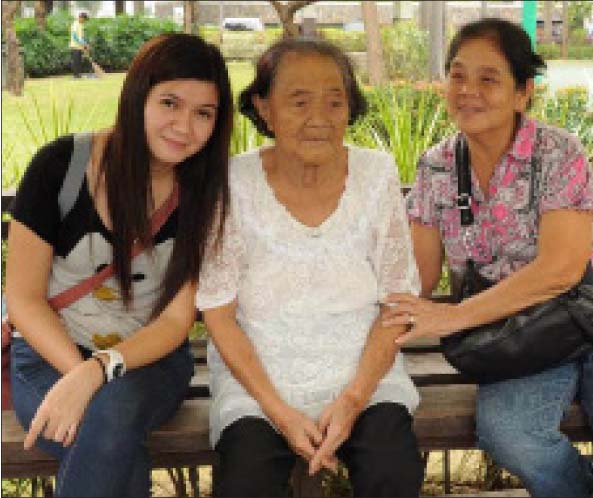
As Ty Keng Guan was in Hong Kong, observing fengshui to determine when to bring his dead wife’s ashes back to China, communication was at a standstill with the relatives in China. Fortunately, another uncle was visiting China in November with a friend and told the family that he will meet with their maternal cousin Ty Chi Ben.
Grandmother Susa
During this time, Evita messaged Ed and thanked him for his help. Evita was glad that a long lost uncle in China was looking for them and that the family would be reunited after a separation of more than 50 years. Ed privately vowed that he was going to help them reunite before Christmas.
Meanwhile, we also learned that Chan Chuy Kong’s third wife, Susana Reales, is still alive. Already in her 90s and living in Pagsanghan, she had gotten extremely sick and had to be brought to a Tacloban hospital for treatment.
Thankfully, she recovered. That particular stay in Tacloban enabled her to see the letter and photos sent by Chan Bon Kheng. Ed related how Dondon Chan messaged him that Tiya Nelia (also known as Egin, sister of Enio) wanted to meet them and asked for their business address. Tiya Nelia’s niece, Mary Ann Singzon, visited them and Ed’s parents showed her the old photos. Mary Ann confirmed that she knew some of those in the pictures.
Immense tragedy
Weeks passed and we were at a standstill in our mission. And to make matters worse, disaster struck. Typhoon Yolanda hit the Philippines, killing more than 6,000 people.
Ed’s home in the capital city of Tacloban was not spared. Our mission of searching for Evita’s family turned into a search mission for Ed and his family instead. (See complete story on page 11, “Into the storm: Immense tragedy”).
Fortunately, Ed’s family survived Typhoon Yolanda. They had lost all their physical possessions, including the photos but at least, the family was alive and well.
Good thing that Ed took copies of these old photographs and letters on his mobile phone and had posted them in FB. Such is the importance of taking backups of old pictures and documents these days. One never knows when and where accidents or disaster will strike.
Quest continued
One day, Ed informed me they were able to reconnect with his maternal relatives. His uncle had visited China in November as planned and came back with the address and cell phone number of Chan Bon Kheng.
Apparently, their kin saw the news of Yolanda’s onslaught which made international headlines for weeks. Knowing the hardest hit was Tacloban, the China kin were very worried.
Upon learning of Filomeno Ty’s arrival in Quanzhou, they went to see him to ask how Ed’s family was coping after the storm. So, the meeting also provided an opportunity to update addresses and contact information.
An even better news was that Chan Bon Kheng is still alive. Their China kin helped contact Chan Bon Kheng to inform him that his relatives in Pagsanghan have now been found.
Best gift of all
I was back in Catarman, my hometown in Samar, for the Christmas holidays in 2014. My Chinese then was still very poor, although I am not saying it’s very good now. I did not graduate from any Chinese school, just attended two semesters of Mandarin crash course at Chiang Kai Shek College.
I asked my cousins in Eni to call up the number Ed gave me and asked for a QQ account. Tencent QQ, more popularly known as QQ, is an instant messaging service popular in China.
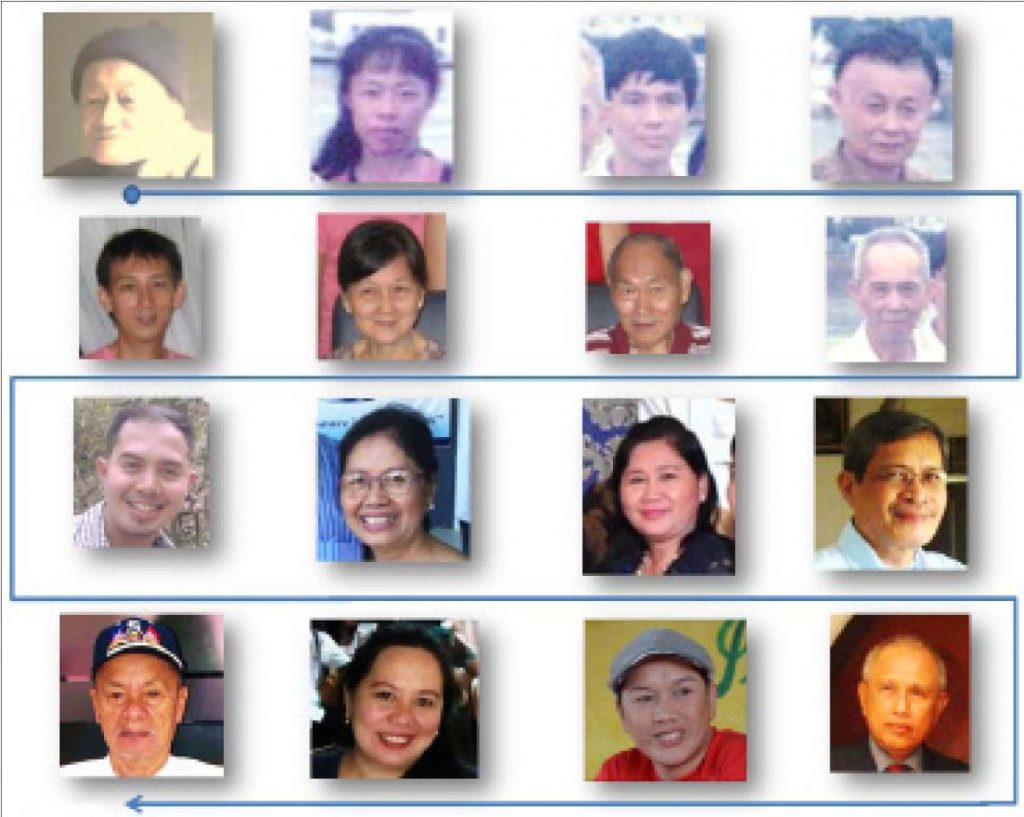
I installed QQ in my laptop to chat with my relatives in China as well as have video conference with them, especially during Chinese New Year celebrations. I used Google’s online translation services to read and write very crude translations.
Through my cousins, I received the account of a young lady named Go Suan Bei (吳瑄妹). She says her husband is Chan Bon Kheng’s grandson and she gave me the number of Chan Kian Hua (曾建發), her cousin-in-law who lives with Chan Bon Kheng, Chan Kian Hua’s grandfather.
Wu Xuan Mei informed me that her grandfather-in-law is already frail so arranging an online meeting had to be organized carefully since travel would be a challenge.
On Dec. 25, I was able to have a video chat with Chan Kian Hua, and I was able to arrange a schedule with Wu Xuan Mei for Chan Kian Hua to bring her grandfather to their house.
For the relatives in Pagsanghan, I guided Evita to install QQ on her personal computer. While my family was busy preparing for the New Year, in the morning of Dec. 29, which was Evita’s birthday as well, I became moderator and translator to the online webcast of the first-time reunion of a long separated family.
Not only did we find Chan Bon Kheng’s relatives, it’s the first time Chan Bon Kheng would meet his relative Enio and his siblings in person. It’s amazing to see Chan Bon Kheng in video having an uncanny resemblance with his relative Enio!
To one person you are the world
“To the world you are one person, but to one person you are the world” — Unknown Author.
This aphorism is from my fellow relative finder from mainland China, Owen Chuan (詹仙友). It very clearly illustrates the situation of so many Filipino families who have “lost” loved ones in the mainland, especially after the Chinese civil war of 1949.
It shows that the longing for far away family is not one sided. The feeling is mutual – there are many people in China who also long to find their relatives here in the Philippines.
In the most dire and darkest of circumstances we do see the light of humanity, the concern for loved ones’ welfare. After Yolanda, we have finally connected the siblings from Pagsanghan with their brother in China.
Or have we really? The saga continues. — First published in Tulay Fortnightly, Chinese-Filipino Digest 29, no. 3 (July 5-18, 2016): 8-10.
